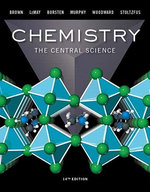?The following plot shows the potential energy of two Cl atoms as a function of the distance between them. (a) If the two atoms are very far
Chapter 9, Problem 9.5(choose chapter or problem)
The following plot shows the potential energy of two Cl atoms as a function of the distance between them.
(a) If the two atoms are very far away from each other, what is their potential energy of interaction?
(b) We know that the \(\mathrm{Cl}_{2}\) molecule exists. What is the approximate bond length and bond strength for the Cl– Cl bond in \(\mathrm{Cl}_{2}\) from this graph?
(c) If the \(\mathrm{Cl}_{2}\) molecule is compressed under higher and higher pressure, does the Cl–Cl bond become stronger or weaker?
Text Transcription:
Cl_2
Unfortunately, we don't have that question answered yet. But you can get it answered in just 5 hours by Logging in or Becoming a subscriber.
Becoming a subscriber
Or look for another answer
